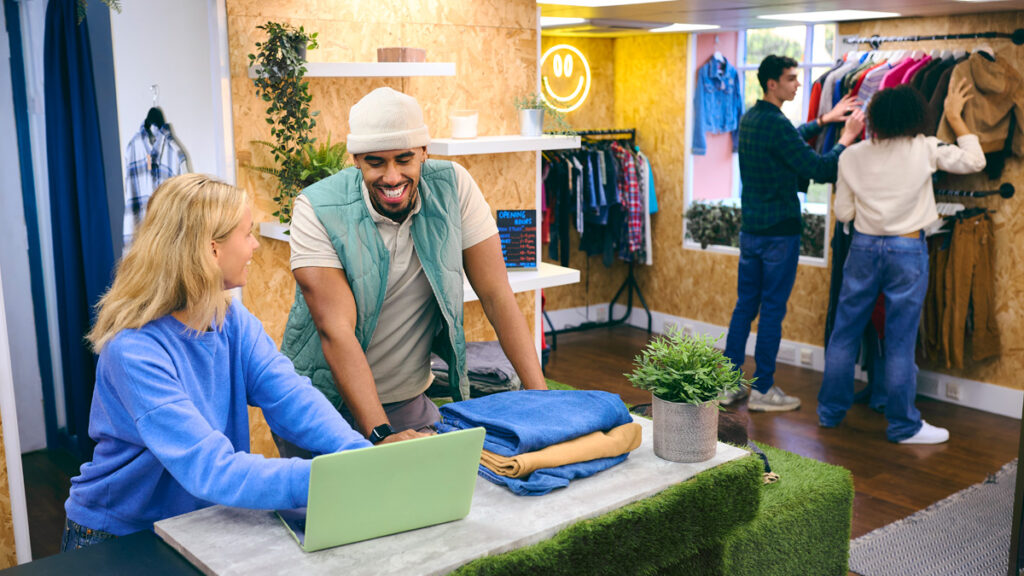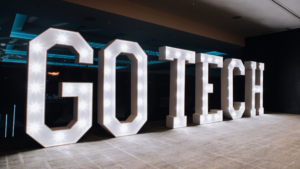The rise of the perfect pop-up store

Written by Ana Milevskaja, senior director of product marketing and demand generation at Elastic Path.
From wine bars and coffee shops to fashion and arts and crafts, retailers of all sizes are using pop-up stores as a way to increase sales, experiment with new ideas and truly innovate.
Pop-up shops were created by the financial crash in 2008 as an alternative to long retail leaseholds, and since their inception, they have gone mainstream. The UK’s pop-up industry is currently worth over £2.3 billion a year and with almost 30% of British businesses beginning their entrepreneurial journey as a pop-up, it’s safe to say that the phenomenon isn’t going away any time soon.
Why does this tactic work?
There are a number of reasons why pop-ups are thriving in today’s cities. For one, brands are drawn to them as it provides them with an opportunity to explore new geographic markets without committing to a brick-and-mortar location.
Secondly, rental leases are more flexible now, meaning that brands have the flexibility to come and go as they determine where to expand. Investing in a short-term location also gives them a better sense of demand with less upfront costs, freeing them up to make prudent long-term decisions.
At the same time, pop-ups provide companies with the opportunity to experiment with new concepts and campaigns, while gathering useful data that can inform a better, more seamless customer experience.
What do you need to consider?
As with any emerging channel, there are a handful of challenges that can hinder brands from creating the perfect pop-up. If the above benefits appeal to you, then it’s worth keeping these top tips front of mind.
Purpose and vision: set a clear objective
The allure of experimentation is powerful, but an unsuccessful pop-up store is generally defined by its lack of direction and purpose.
Setting a clear objective is king. Establishing clear brand intentions and goals to determine what you want to accomplish before entering into pop-up territory is paramount.
Are you trialling a new product line? Testing new markets before establishing a brick-and-mortar store? Generating awareness of your brand? Whatever you’re trying to achieve, make it clear from the offset and ensure that any decisions made, be it day-to-day or long-term, are closely aligned with that goal.
For instance, if you want to create buzz for your brand, make sure your pop-up surprises and delights customers. Why not offer free product giveaways, competitions, or launch a customer loyalty programme?
Stand out from the crowd
This is not so much of a challenge as it is a pitfall. Brands that treat pop-ups as half-baked brick-and-mortar stores typically don’t perform very well. Customers need a reason to visit, particularly if they have the option to order your products online or if they’ve not come across your brand before. So, there’s an opportunity here to use your pop-up to experiment with exclusive offers and more engaging services to attract attention.
For example, for two consecutive years, Amazon ran a Black Friday tie-in pop-up shop dubbed the ‘Home of Black Friday’. Based in London’s Soho Square it featured 100 curated products and five themed rooms, showcasing top deals in the week preceding Black Friday. Visitors were able to purchase products by scanning a QR code to open up the product page on the Amazon app. And a dedicated Prime Now delivery area in the lobby of the venue allowed shoppers to have their Black Friday deal purchases delivered to the pop-up within two hours for them to collect.
As well as shopping, there were workshops hosted by small business owners, master classes, cocktail tastings and makeup tutorials by popular YouTubers, and competitions.
Time is of the essence: streamline transactions
The success of your pop-up also relies on the ability to facilitate transactions as quickly and seamlessly as possible. Leveraging mobile checkout experiences will allow you to achieve just that, as customers can bypass the long lines that often cluster in these smaller retail spaces.
Brands also need to ensure they very quickly adapt to the unique, exceptional experiences that customers demand, whether that’s interactive in-store displays or apps to enhance their engagement in-store, and ensure they are set up in multiple locations.
Implementing an API-first commerce strategy will enable you to achieve all of these things, as it allows brands to quickly establish connections to back-end systems as opposed to launching a major implementation project for each location.
This means that you can leverage the same shopping cart across all touchpoints in the customer’s journey if they’ve already shopped with you online for example, and also provide real-time data and analysis on how they interact with your brand. Such insights are invaluable in order to compete and gain customer loyalty. It also means you can add a commerce experience to any touchpoint, so an interactive mirror that enables you to purchase what you’re trying on and walk out of the store becomes a possibility to wow your customers with.
Against the wider picture of high street retail woes, pop-up stores point to an optimistic future. As it stands, 90% of overall retail sales are still made in brick-and-mortar buildings, and pop-up stores can be seen as part of a larger effort to revitalise the sector. The market has proven that the pop-up model is a terrific strategy for brands looking to offer engaging experiences, test new ideas and gather invaluable data. However, the benefits can only be actualised with a unified vision and strong technology to support it. Using an API-first strategy primes the business to better respond to the customer’s journey and on a grander scale and should be high on the agenda for any brand.



